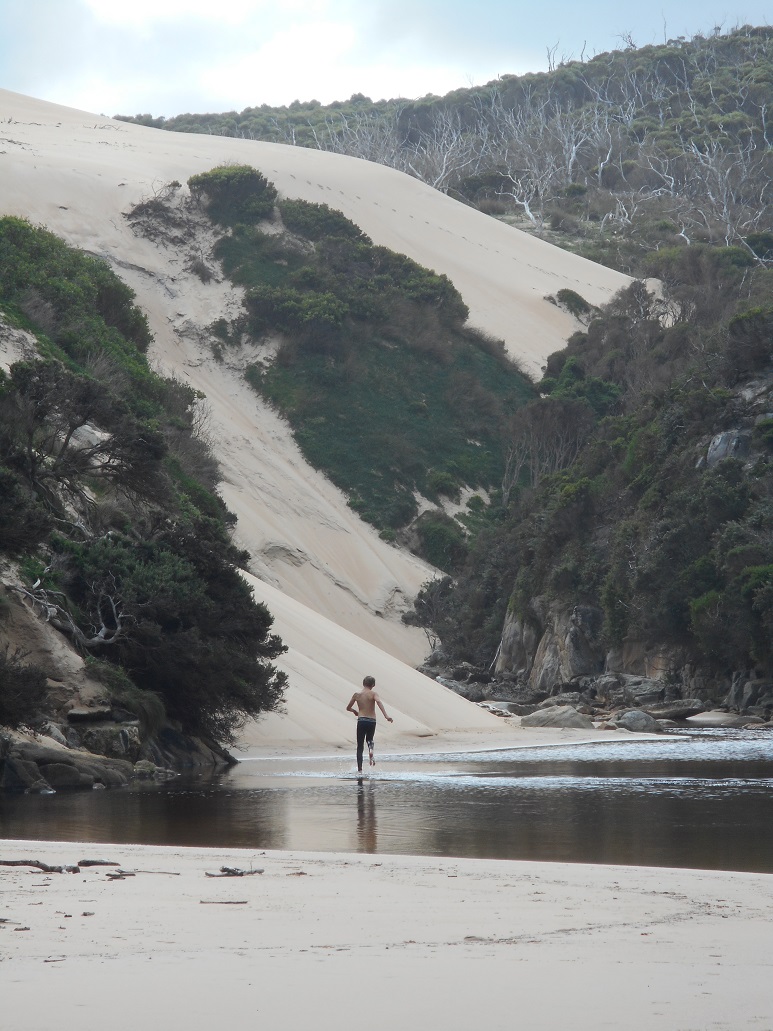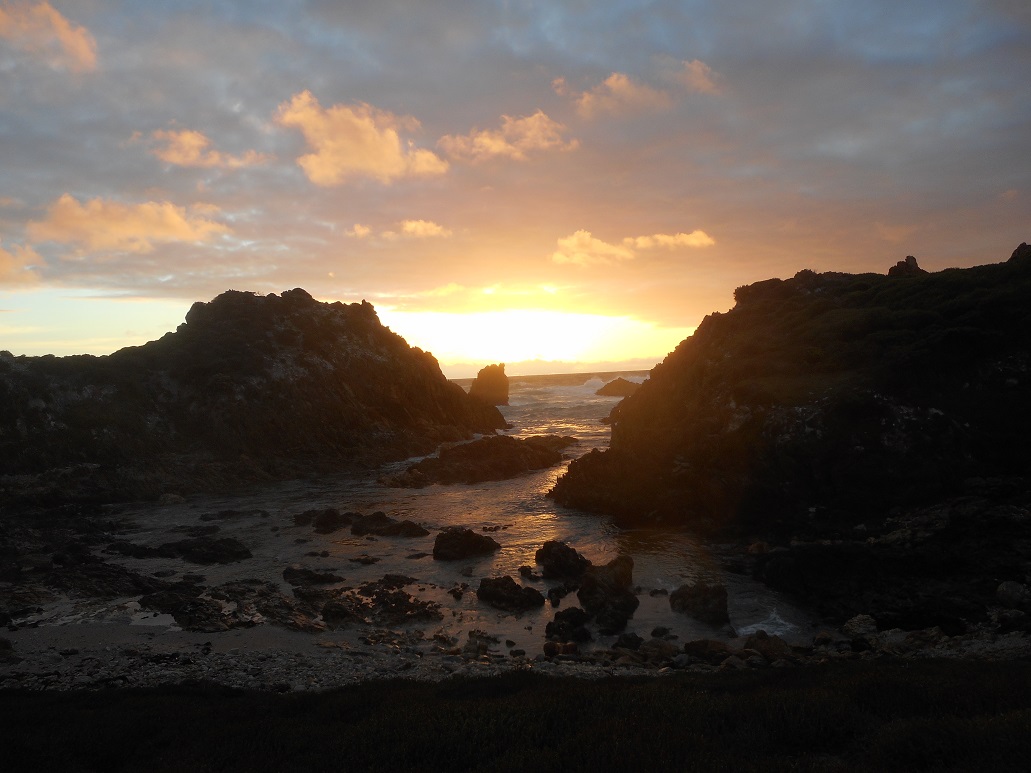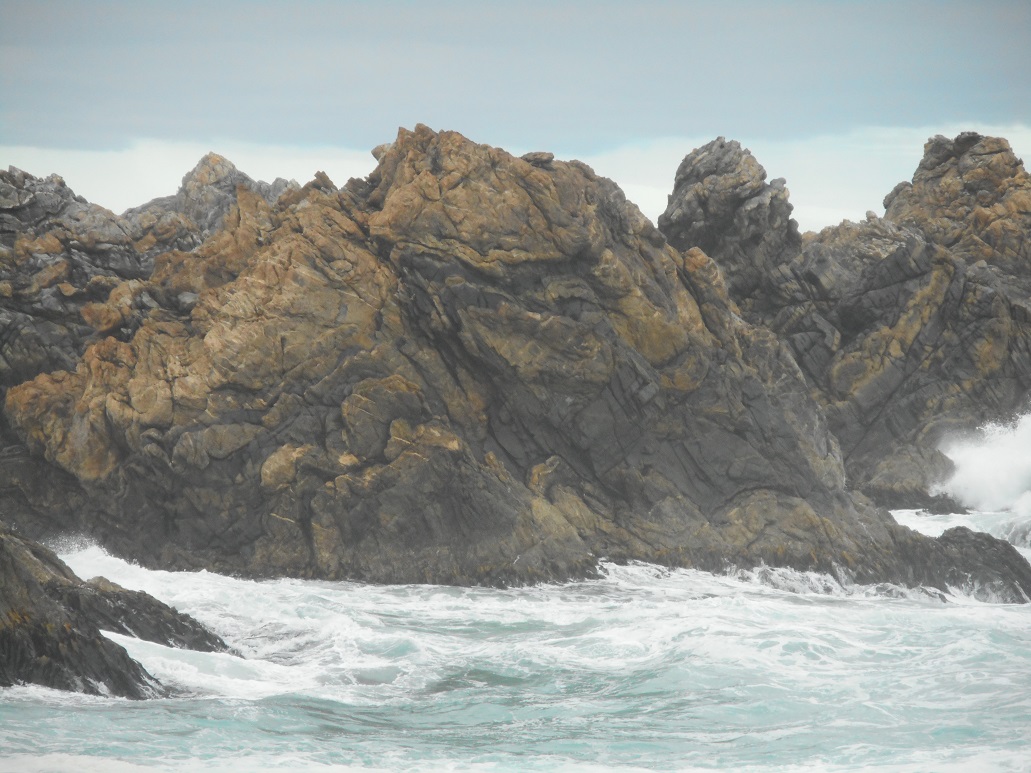Featured image: Northwest Tasmania. Photo by Joanna Pinkiewicz, Deep Green Resistance Australia. by Dr. Geoff Holloway
Ecocentrism is an all-encompassing concept that covers geo-diversity and biocentrism but extends the latter. Also, by definition, eco-centrism is the basis of calls for the Rights of Nature and is the fundamental basis of Deep Ecology (including Deep Green Resistance). Eco-centrism is the opposite of anthropocentrism. This creates a divide within the Green/environment/conservation movement – but a largely unacknowledged divide (however, United Tasmania Group [UTG] has experienced clashes with the anthropocentric section of this movement).
As Kopnina et al point out (2018), anthropocentrism supports and is based on utilitarianism and human self-interest. They also argue that there is no such thing as ‘good’ anthropocentrism or, for that matter, ‘legitimate’ and ‘illegitimate’ human interests. I have argued elsewhere about the limitations and consequences of utilitarian and bureaucratic attempts to redefine wilderness (Holloway 2018).
Anthropocentrism is not just about capitalism and economic elites, it is about the ideology that privileges humans above the rest of nature (Kopnina et al, 2017). Also, often over-looked conveniently by leftie conservationists is the fact that ‘socialism’, however defined, is based on (over) exploitation of nature.
The key ecocentric authors are Helen Kopnina and Haydn Washington (but there are many others), and the key journals are The Ecological Citizen (peer reviewed) and The Ecologist, which also has an email-based discussion group for ecocentrics.

According to year 2000 World Values Survey, the majority of people across the world are concerned for nature first - 76% of respondents across 27 countries said that humanity should co-exist with nature, and only 19% said the humanity should ‘master’ nature (Leiserowitz et al 2005). However, breaking down this positive attitude reveals importance differences. For example, ecocentrism is at variance with scientism, the belief that sentient animals have intrinsic value, or biocentrism, the belief that not just animals but plants also have intrinsic value. As Mikkelson (2019) points out, scientism and biocentrism are both committed to moral individualism; whereas ecocentrism holds that “in addition to the well-being of its constituents parts… overall diversity and integrity within species or ecosystems” count as well. Ecocentrism is the only approach that is totally non-utilitarian or humanity-first in its orientation. Ecocentrism includes maintaining geodiversity and biodiversity (see Washington, 2018, page 137).
The following definition of ecocentrism comes from Gray et al (2018) in The Ecological Citizen:
Ecocentrism see the ecosphere – comprising all the Earth’s ecosystems, atmosphere, water and land – as the matrix which birthed (sic) al life and as life’s sole sustenance. It is a worldview that recognises intrinsic value in ecosystems and the biological and physical elements that they comprise, as well as in the ecological processes that spatially and temporally connect them.
Ecocentrism thus contrasts sharply with anthropocentrism, the paradigm that currently dominates human activities, including responses to ecological crises such as the sixth mass extinction.
There is a simple questionnaire in The Ecological Citizen, Vol. 1, No 2, page 131, if you would like to assess whether you are deep green or ecocentric. There is also a Deep Ecology eight-point platform in The Ecological Citizen, Vol. 2, No 2, 2019, page 182) which may be of interest.
How does one arrive at an ecocentric perspective?
- Kopnina’s (2017) has discussed her personal experience of becoming ecocentric when growing up in Russia, Arizona and India. Her conclusion is that environmentalism is universal, not just Western – but also points out that a lot of activism is still anthropocentric and missing the point. This difference is sometimes characterised as ‘shallow’ versus ‘deep ecology’. All of this is based on Kopnina’s wilderness experiences and as she says, “For me, like many others, wilderness is a place of refuge, freedom and healing but also something else – something independent of me, but also far greater than me, something that may be part of me, or that I may be part of.” This is where anthropocentric, utilitarian, bureaucratically minded self-seekers in the politically institutionalised environment movement totally miss the point – more of that later.
- UTG – political experience: the birth of UTG on 23 March 1972 was based on the recognition that there was a fundamental clash of values in the State Government’s intention (actually, the Hydro Electric Commission was the real government in Tasmania back then, just as the Tourism Industry Council of Tasmania (TICT) is becoming the real government in Tasmania today). The set of ethical and ecocentric principles underlying UTG is outlined in A New Ethic.
Ecocentrism finds intrinsic value in all of nature – that includes living and non-living parts of nature. Ecocentrism goes beyond biocentrism, which focuses on only living things, not ecological and geological aspects of nature. Scientism and perhaps biocentrism is represented in groups such as Animals Tasmania and its affiliate, the Animal Justice Party. Ecocentrism is an all-encompassing term in contradistinction with anthropocentrism, which is based on utilitarian, human-centred values. Anthropocentrism values non-human life forms through the lens of values for human well-being, interest and profits (Washington et al 2017).

A few of the key players in the historical development of ecocentrism
Henry David Thoreau (1817-1862; Civil Disobedience 1849 and Walden 1854) and John Muir (1838-1914; co-founder of the Sierra Club 1892) are arguably the founders of the wilderness conservation movement in the USA and staunch advocates of the intrinsic value of wilderness, which is the foundation of ecocentrism.
Aldo Leopold (1887-1948) – who pointed out in A Sand County Almanac that ‘conservation’ in his day almost invariably focussed on economic interests (Bassham).
Arne Naess (1912-2009) – distinguished between ‘shallow’ and ‘deep’ ecology. Shallow ecology is human-centred and resonates with the environment movement in Tasmania today. On the other hand, deep ecology is focussed on the inherent value of all things, including flora, fauna, ecosystems, rivers, mountains and landscapes.
Rachel Carson (1907-1964; Silent Spring 1962), Paul R. Ehrlich (1932- ; The Population Bomb 1968), E.F. Schumacher (1911-1977; Small is Beautiful: a study of economics as if people mattered 1973), and Christopher Stone (Should trees have standing? 1972). It was from Stone that UTG first drew its ecocentric set of values, as enunciated in A New Ethic (first published in 1972).
Douglas Tompkins (1943-2015) and Kristine Tompkins (1950- ): The most notable, and practical, of deep ecologists in recent times have been Douglas and Kristina Tompkins who have created millions of acres of national parks and reserves by purchasing vast areas of land in Chile and Argentina then handing them back to the respective governments as national parks. In the world’s largest private donation of land in the world the Tompkins handed over more than a million acres of land to Chile on condition that the Chilean government contributes nearly nine million acres of federally owned land – which it did in 2018, representing an area about the size of Switzerland – as National Parks preserved for posterity (National Geographic 2018). The Tompkins also donated vast areas in Argentina, including 163 thousand acres to Monte Leon National Park, 37 thousand acres to Perito Moreno National Park and 370 thousand acres of land in the Estuaries of Iberá, the second largest wetland on the planet.
David Brower (1912-2000): first Executive Director of the Sierra Club, 1952-1969, which is left and founded the international organisation, Friends of the Earth, in 1969. He came to Tasmania in 1974 and said that he was very impressed with UTG who hosted him.
Christopher D. Stone (1937- ), Should trees have standing? Towards legal rights for natural objects (1972): This was a seminal article that set the scene for what has recently become an explosion of interest in granting legal rights to non-human species and nature generally. Stone’s publication had a big impact on UTG and is the basis of UTG’s original adherence to ecocentrism.
Since Stone’s seminal work Nature’s Rights have been expanding fast across the world, especially in recent times, but mainly to rivers and lakes. In 2008 Ecuador became the first country to enshrine nature’s rights in its constitution – but implementing these rights is another matter. In 2012 Bolivia also adopted nature’s rights in law, but again, fails to implement them when they clash with development. In 2010 Bolivia passed its own constitutional reform, including the Law of the Rights of Mother Earth but implementation of the principles has been distinctly lacking.
Recent victories include Nature’s Rights for the Vilcabamba River in Ecuador, the Whanganui River in New Zealand, the Atrato River in Colombia (May 2017), and since then the entire Colombian Amazon (April 2018) and just recently for Lake Ohio, USA (March 2019). The Colombian Amazon is notable as it was initiated by a group of Colombian young people (Moloney, 2018). This is now being called “the next great rights-based movement” (Wilson and Lee, 2019).
There are on-going campaigns in Mexico, Nigeria and Serbia (where 800 dams are planned!) and several other US communities. In Australia there is the Australia Earth Laws Alliance, which was established in 2012 (Director and co-founder is Dr. Michelle Maloney).

Tasmania
While Tasmania used to be at the forefront ecocentrism and Nature’s rights it has been going backwards over recent times. It could be argued that this is largely due to a ‘boys club’ (photo on UTG facebook site) that dominates the movement here. This ‘club’ has seen a shift to what Helen Kopnina and Haydn Washington refer to as ‘anthropocentric conservation’. As they point out, “it is anthropocentrism that hinders an ecologically sustainable solution” to the key battleground for ecocentrism – protected ecosystems, ie, wilderness and national parks and reserves and their management (Kopnina et al, 2017). These anthropocentric conservationists “(who likely consider themselves traditional in their conservation orientation) argue avidly for protecting ‘ecosystem services’ (i.e. services to humanity) are decidedly (if implicitly) anthropocentric” (Washington, 2015). In the Tasmanian context these ‘services’ include bureaucratic management plans, which includes reducing wilderness to a category (as argued by Holloway 2018).
The position held by anthropocentric conservationists is only going to get worse with 1,200 species of birds, mammals and amphibians about to be wiped out across the world (The Guardian, 2019).
Democracy and ecocentrism
Anthropocentric conservationists are very much tied to what Eckersley (2019) calls ‘environmental democracy’ which seeks to work within institutionalised, liberal democracy and has been a spectacular failure in addressing issues beyond local communities or states. ‘Ecological democracy’, on the other hand, offers a critique of these institutionalised politics and seeks to extend human rights to nature. This has given rise to some new organisations, such as Deep Green Resistance, which is developing a new form of radicalism.
Environmental democracy, which began around the time of Rachel Carson’s Silent Spring and other such publications, has run its course and the result is an increasing number of failures in environmental campaigns (the most notable being climate change). Also, environmental democracy tends to focus on procedural rights and legal processes with less and less achievement in terms substantive environmental rights and environmental successes (Eckersley 2019, page 7) – again, this can be traced back to a failure to endorse ecocentrism.
Another example of the limitations of environmental democracy is what I call the 10% barrier, which afflicts most Green parties across the world. This barrier is rarely crossed – despite nearly fifty years of Green parties. For this reason UTG is developing into a new form of political organisation – a network of autonomous but linked, non-hierarchical, community campaigns, rather than the oligarchical branch structure of the old parties and environment organisations (which includes the Greens).
As Eckersley (2019, page 11) summarises it,
Unlike the first iteration of ecological democracy, this new iteration seeks to connect ecology and democracy in everyday life by creating new and more ecologically responsible material practices in collective, embodied, and prefigurative ways. This is a marked shift in focus away from representative democracy ‘from above’ and towards more radical and participatory forms of democracy ‘from below’ through the creation of ‘publics’ and self-organising movements.
As Lepori points out (in Eckersley 2019), “…whereas institutionalised democracy is mostly simulated and excludes ordinary people; it is ‘where democracy goes to die’” (my emphasis).
How has this slow death come about?
Unfortunately, much of the energy of the ecocentrism of the 1970s seems to have dissipated in the smoke trails of hippy communities, Eastern mysticism and the romanticisation of indigenous peoples ‘Earth-wisdom’ – and that continues today in some parts of the Nature’s Rights movement. This is not to say that there is no Earthwisdom within indigenous communities, just that I am not sure about various interpretations. Also, it is debatable as to whether indigenous perspectives are ecocentric, especially given survivability issues concerning some species (e.g. mutton birds).
The indigenous starting point is that there is no such thing as ‘wilderness’ (even though it is accepted by the IUCN that indigenous people living in wilderness areas does not preclude an area being declared a wilderness, not to mention having World Heritage status).
Given the exploitative threats by tourism wilderness and national park exploitation strategies and the rapidly accelerating impacts to climate change there is a need to work together, with ecocentrism having primacy. As Washington et al (2018) have argued, there can be no ecojustice without ecocentrism and as Washington et al (2017) have also argued “ecocentrism is the key to sustainability”.
References
AIDA Americas, 2016. https://aida-americas.org/en/blog/invaluable-legacy- douglastompkins
Bassham, Gregory. Aldo Leopold’s Land Ethic: A Critique. Chapter 6.
Eckersley, Robyn, 2019. Ecological democracy and the rise and decline of liberal democracy: looking back, looking forward, Environmental Politics, DOI: 10.1080/09644016.2019.1594536
Gray, Joe, Ian Whyte & Patrick Curry, 2018. Ecocentrism: what it means and what it implies. The Ecological Citizen, Vol 1, No 2.
Holloway, Geoff, 2018. Review. Refining the definition of wilderness, Tasmanian Times, https://tasmaniantimes.com/2018/08/refining-the-definition-of-wilderness-by-hawesdixon-bell/
Kopnina, Helen, 2017. Ecocentrism: a personal story. The Ecological Citizen, Vol 1, Supplement A.
Kopnina, Helen, Haydn Washington, Joel Gray & Bron Taylor, 2017. “The ‘future of conservation’ debate: Defending ecocentrism and the Nature Needs Half movement”, Biological Conservation, January 2018.
Kopnina, Helen, Haydn Washington, Bron Taylor & John Piccolo, 2018. Anthropocentrism: More than just a misunderstood problem. Journal of Agricultural and Environmental Ethics, Volume 31, Issue 1.
Leiserowitz, Anthony, Robert Kates & Thomas Parris, 2005. Do global attitudes and behaviors support sustainable development? Environment, Volume 47, Number 9.
Mikkelson Gregory, 2019. Holistic versus individualistic non-anthropocentrism. The Ecological Citizen, Vol 2, No 2.
Moloney 2018
National Geographic, 2018, https://news.nationalgeographic.com/2018/01/chile-newnational-parks-10-million-acres-environment/
The Guardian 2019, https://www.theguardian.com/environment/2019/mar /13/almostcertain-extinction-1200-species-under-severe-threat-across-world
Washington, Haydn, 2015. Demystifying Sustainability: Towards Real Solutions. Routledge, London.
Washington, Haydn, 2018, The intrinsic value of geodiversity. The Ecological Citizen, Vol 1, No 2.
Washington, Haydn, Bron Taylor, Helen Kopnina, Paul Cryer & John Piccolo, 2017. Why ecocentrism is the key pathway to sustainability. The Ecological Citizen, Vol 1, No 1.
Washington, Haydn, Guillaume Chapron, Helen Kopnina, Patrick Curry, Joel Gray & John Piccolo, 2018. Foregrounding ecojustice in conservation. Biological Conservation. Volume 228.
Wilson, Grant & Darlene May Lee, 2019. Rights of rivers enter the mainstream. The Ecological Citizen, Vol 2, No 2.
Geoff Holloway is an Australian author, poet, conservationist and political activist. He is a sociologist, as well as activist within the United Tasmania Group in its earlier iteration, and later He was one of the individuals present at the change of the focus of the former South West Tasmania Action Committee that led to the founding of the Tasmanian Wilderness Society in 1976. He is also author of works about conservation and environment groups in Tasmania . Geoff is also an active political ally to women in Women Speak Tasmania group.
